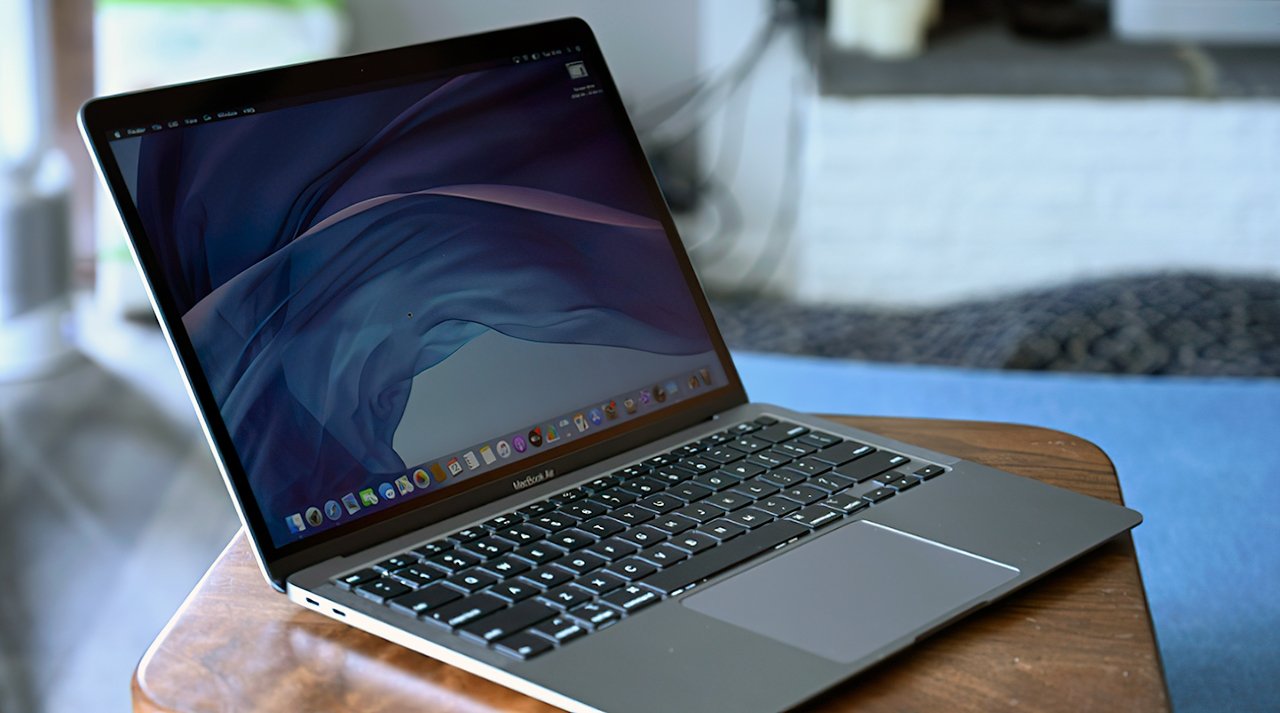Since its launch, Apple has regularly made changes to the MacBook Air. In mid-March of 2020, Apple refreshed this Mac line with faster processors and a new keyboard. While Apple launched an updated model in late 2020 with Apple Silicon, this early-2020 update helped make the MacBook Air the laptop for anyone all over again.
2020 MacBook Air Features
The external design remains the same when compared to the 2019 model, so looking at it won't reveal many changes. However, the inverted-T arrow keys landed in this model, and plenty has been updated internally as well.
Keyboard
Starting with this early 2020 model, the latest MacBook Airs now include the Magic Keyboard first introduced in the 16-inch MacBook Pro. A redesigned scissor mechanism with 1mm of travel means no more sticky keys from previous generations. The inverted-T arrow keys have also returned.
The keyboard spreads edge to edge with a speaker grill on either side. A three microphone array is arranged so that speaking or playing an instrument is easily captured at high quality. And the large glass trackpad sits beneath the keyboard as expected.
The previous generation housed a butterfly keyboard, which had multiple updates and changes attempting to address reliability issues. The butterfly switch was prone to stuck keys or broken mechanisms, which had a higher failure rate than previous scissor-switch designs.
Apple had implemented keyboard repair programs for the butterfly keyboard, but the introduction of the new Magic Keyboard seems to be a final admission that there was some issue at hand. Even the latest iPad Pro keyboard uses the new Magic Keyboard scissor-switch design.
Processors
With the latest Intel processors, the early 2020 model offers up to double the previous generation's performance. Updated graphical capabilities also mean up to an 80% increase in graphics performance.
The early 2020 MacBook Air uses the 10th-generation Intel Core processors with up to 1.2GHz quad-core i7 chipsets. During heavy load, the processors can Turbo Boost up to 3.8GHz for short bursts of speed. Don't let the i3 naming fool you as the baseline chips are better than the ninth-generation Intel i5 from the 2019 model.
The graphics performance comes from including a dedicated Intel Iris Plus Graphics chipset. This means that everything from navigation and UI rendering to video editing and gaming saw a significant speed boost.
Other
The two USB-C ports on the side of the machine are both Thunderbolt 3 compliant. This means users can connect two 4K displays, a single 5K display, or now even a 6K display.
These ports can also be used for high-speed Thunderbolt 3 capable hard drives for up to 40GB/s data transfer speeds. External GPUs also work with these ports for even more graphic performance while at a desk.
The FaceTime camera did not receive an upgrade and is still 720p, but the new microphone array greatly improved call quality.
The wireless capabilities remain the same with Bluetooth 5 and 802.11ac Wi-Fi. The omission of WiFi 6 is noted, considering the iPhone 11 and iPad Pro both have the standard.
The early 2020 MacBook Air shipped with macOS Catalina.
AppleInsider reviewed the early 2020 MacBook Air and gave it a 4.5 out of 5.
A teardown revealed that the new keyboard wasn't the only new addition to the design. The battery and trackpad connect via a cable, so now battery repair can take place without removing the logic board. This means the laptop is much more repairable than its previous generation.
MacBook Air Pricing
Apple no longer sells the early 2020 MacBook Air in new condition, but Apple Authorized Resellers still have stock. The device's suggested retail price started at $999. The base model shipped with a 1.1GHz i3 processor with turbo speeds up to 3.2GHz, and 256GB of flash storage. A $1299 model came with a quad-core i5 processor with turbo speeds up to 3.5 GHz and 512GB of flash storage.
The 2020 MacBook Air configured with an Intel i7 processor with 512GB of flash storage retailed for $1449.
 |
 |




 Christine McKee
Christine McKee
 Amber Neely
Amber Neely





 Andrew O'Hara
Andrew O'Hara

 Andrew Orr
Andrew Orr